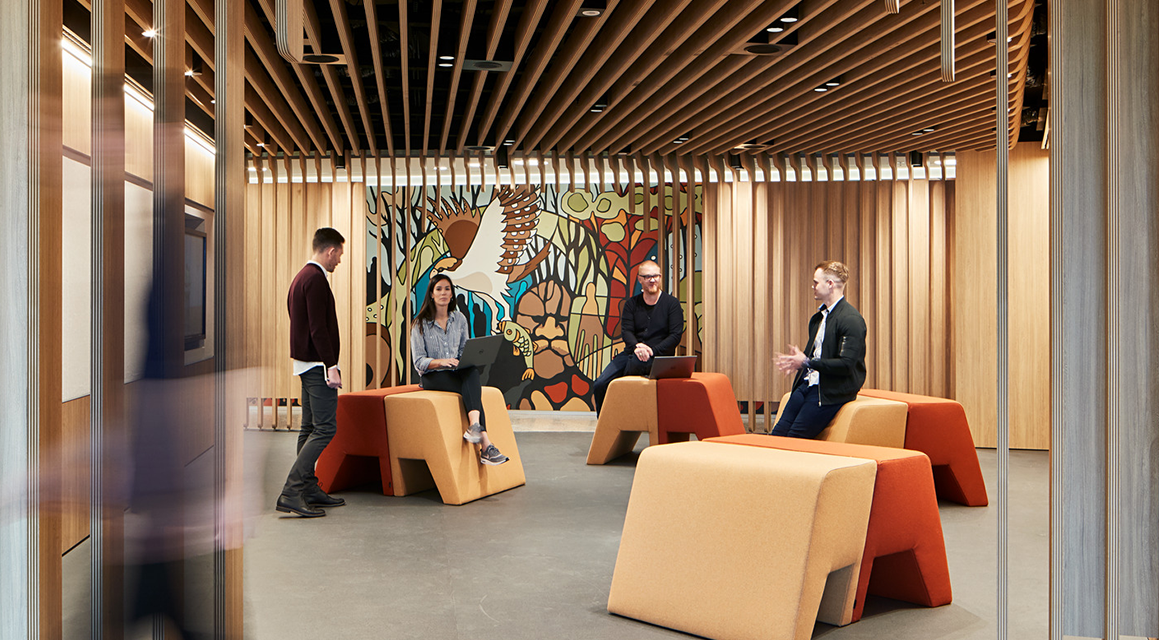
With large areas of Europe and North America under lockdown once more, working from home is an unavoidable reality for millions of employees. Work from home fatigue is on the rise everywhere as people lament the absence of office socialisation and the shortcomings of ‘living at work’. We sat down with Lawrence Mohiuddine, Managing Director Americas & EMEA and Nicola Harris, Global Principal People & Culture to understand what businesses can do.
When nations were unexpectedly thrust into lockdown early in 2020, countless articles appeared predicting a home working revolution and the death of the physical office.
Indeed, our own research showed that between 80-90% of the workforce wanted to work from home at least 1-2 days a week post-pandemic. The home working revolution was real, widespread, and rapidly transforming our day-to-day business practices.
Lawrence Mohiudinne, Managing Director Americas & EMEA observes “And yet, a quick scroll through the news today brings up a flurry of headlines such as ‘More employees suffering from Zoom fatigue’, ‘Breaking up the monotony of working from home’ and ‘WFH burnout is real, here’s how to beat it’.”
It seems that the revolution against home working is also gaining momentum.
‘Living at work’ explained
Nicola Harris, Global Principal People & Culture says “Being connected while apart is a great benefit to businesses and teams. However it’s easy for the ‘always on culture’ to take hold and the lines between work and home to be blurred. When there isn’t a clear structure to the work day or the physical act of leaving an office or working environment, the work-life balance can shift. So, ‘working from home’ becomes ‘living from work’.”
This is one of the primary causes of work from home fatigue, with employees finding themselves unable to switch off at the end of their working day. “Messages keep coming in via email, WhatsApp, Slack or Teams notifications; there’s no commute for zoning out or mentally processing the day gone by; and, if we're working in our front room or kitchen, there’s probably no difference between our work and non-work environment.” Nicola explains.
In a survey of 237 global Unispace clients over the summer, we found that while the majority had been fully prepared to shift to 100% remote working, more than one third were concerned about employees working longer hours.
Tips such as setting work boundaries, dividing up the day into ‘task zones’, or creating a ‘mental commute’ are worthy but not always realistic, particularly given how reliant home workers are on technology. The mobile phone that keeps pinging an employee with work-related notifications is also the device they use to stay in touch with loved ones during this stressful moment.
Consequently, there is growing recognition that, far from destroying work/life balance, a well-conceived physical office space can prevent work from home fatigue creeping and help ensure that homes remain an environment for enjoying personal time and space.
Getting the best of both worlds
Slack research shows that almost three quarters of desk-based workers now wish to move to a hybrid remote-office model, giving them the advantages of the office experience – socialisation, collaboration, innovation – alongside the flexibility to work remotely to their own patterns when needed.
Our Propeller framework speaks to this need, emphasising the requirement to design and develop workplaces that create value where home working cannot. It offers a flexible approach that could be the key to solving the issue of work from home fatigue.
According to Owl Labs, 77% of employees agree that, after Covid-19, the option to work from home will make them happier.
Staff increasingly want to choose when they venture into the office – for learning events, innovation sessions, client catch-ups, planning sessions or work socials”, explains Mohiuddine. “However, when people are given no choice but to stay at home and participate remotely, fatigue quickly sets in and employees end up feeling disconnected, experiencing only a diluted sense of organisational culture.”
Safe reopening needs to be a priority
Many businesses were hesitant about opening their office doors too early following the first wave of the pandemic. Indeed, some of the world’s biggest companies quickly made home-working the go-to option through until the middle of 2021, while others refrained from reopening entirely, fearing a resurgence of the virus.
“However, as the negative consequences of permanent home working become apparent, it’s time to take a more considered, flexible approach to reopening, by rethinking the structured 9-5 working day in the office. “By setting up the office to support experiences like socialising, innovating, learning and collaborating, you’ll provide balance to your team, where working from home fails.” Mohiuddine explains.
And his advice to clients? “In advance of the eventual easing of Lockdown 2.0, I would advise our clients to devise safe solutions for employees to come into the office. These solutions must enable employees to do their best work in the office from in-person planning sessions, to collaborative creative sessions, innovation and social events that instil a sense of morale, purpose and culture in teams and on-site learning events sessions that digital experiences cannot replicate.”
“We’ve used learnings from our colleagues in Australia, Asia and New Zealand as they navigate a post-lockdown world which we’re now applying across EMEA and the Americas,” adds Mohiuddine. “We’re guiding our clients in delivering Covid-secure workplaces that transform employees’ ability to share ideas and collaborate more effectively, affording them a welcome break from the mental monotony of endless home working and restoring their motivation, appetite for human connectivity, and ultimately, their sense of belonging at work.”


